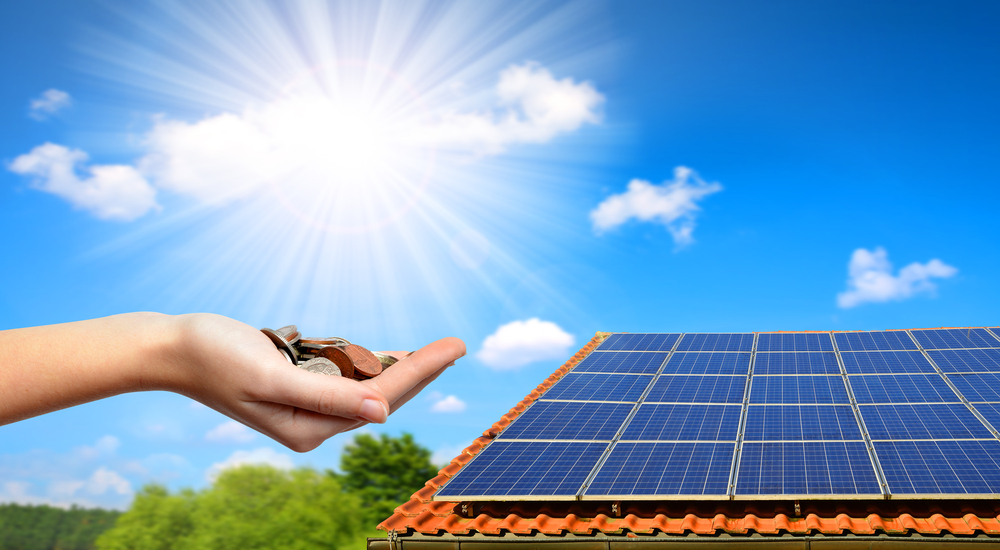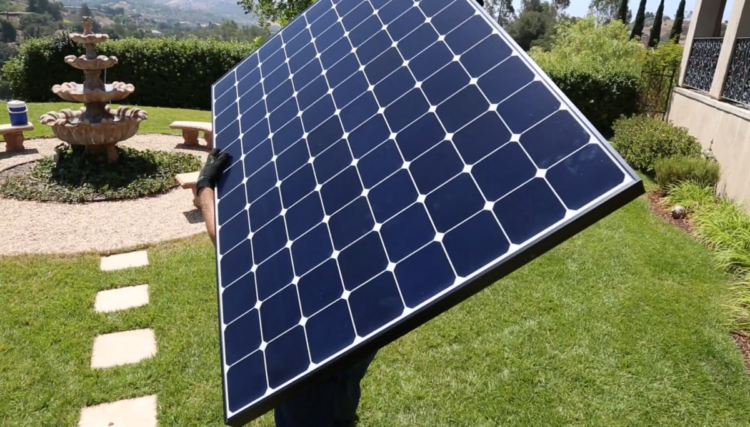




By now you’ve heard plenty of talk about how clean energy is the future of electrical power. You may have even considered putting solar cells on your own roof. But how much are solar panels? The potential expenses worry a lot of homeowners who are otherwise on board with being energy independent and putting an end to their reliance on fossil fuels. The answer to how much solar costs is somewhat complex -- but the overall trends are promising.
Many states, including California, are promoting the addition of solar panels on all new homes. In fact: California will mandate that most new residential properties have solar panels as of 2020. The price of solar will be baked into the sale price of those homes. For the rest of us, there is still good news about how much solar costs now and what the costs are likely to be looking forward. Let’s break down some of the things that affect the costs of solar panels in the current market and what the future looks like.
Solar power is nothing new. Believe it or not, it dates back to the 1800s in California (though a PV panel was a long way out). In the 1970s, activists including Jane Fonda promoted solar as an alternative to energy monopolies. While solar has enjoyed popularity among environmentalists for a long time, logistics like funding and efficiency kept it out of the mainstream. Fossil fuels have had a stronghold on the grid for a very long time. The demand for solar, however, has seen a noticeable spike in the 21st century. Including for the average homeowner.
According to data from Statistica, global demand for solar energy has jumped dramatically in the last 11 years. In 2007, there was a need for just 2.5 gigawatts of solar energy worldwide. By 2018, the demand for solar has reached a whopping 86 gigawatts. The company projects that by 2022, the global demand for solar power energy will reach more than 110 gigawatts. That’s a lot of green energy power!
An increase in demand translates to more efficient manufacturing. This, in turn, can lower the costs of PV panels for the average consumer. As the head of the Solar Energy Technologies Office in the U.S. Department of Energy explains, solar accounted for just 0.01% of the U.S. electricity supply in 2006 but that figure reached 1.5% by the end of 2017. She explains that an increased availability of solar and lowered costs have allowed solar to turn a corner -- and predicts the trend will continue.
Solar panels only capture energy when the sun is out, but that doesn’t mean you’re in the dark when the sun goes down. Solar energy can be stored and used later. When you have batteries onsite, your home will pull from saved energy when the sun isn’t out. Some batteries have enough storage to power your home for days or weeks if it’s particularly cloudy (though panels can still collect up to 25% of their regular energy even when cloud cover exists). Perhaps best of all, solar batteries mean your lights will still be on if there is a blackout in the community.
But how does storage factor into solar costs? The advent of batteries for home solar has grown the potential for the industry. According to the National Renewable Energy Laboratory’s 2017 report regarding expected U.S. energy trends, “the availability of low-cost battery storage can significantly alter the expected buildout and operation of the grid.” If the costs of batteries continue to fall, solar will become even more accessible to all parts of the country and drive down costs per unit.

Answering the question “How much are solar panels?” also requires an evaluation of government tax credits and local laws. As of 2018, an extension of the federal Solar Tax Credit means homeowners can deduct up to 30% of the costs of their solar panel system from their next year’s tax returns. This offsets a considerable amount of the cost to buy and install a solar system! In future years, the amount of the credit is slated to taper off. By 2022, only commercial property owners will still get a tax credit for installing a new system. Of course, a new tax credit could always be implemented to create an incentive for residential homeowners to add solar panels to their property.
Your local laws may also help dictate the ultimate cost of solar panels for your home. While states like Hawaii and California offer incentives like property tax exemptions and net metering for homeowners who go solar, some states are not seeing the light. The residents of Georgia, for instance, where solar is otherwise thriving, only have access to the federal tax credit. As more lawmakers see the potential in clean energy for their economy and energy efficiency -- the net cost to consumers could begin to drop for people in every state.
You might think a solar panel is a solar panel… but you would be wrong! There are different types of PV panels, and the type of panel you choose could ultimately inform how much you pay for solar. What’s more, as innovation delivers even more options, future costs of solar could continue to decline.
As for what is on the market today, there are two primary types of solar panels. A third type, thin-film solar cells, are currently less efficient and often take up too much space to be used on a residential roof. They are quite affordable, so if you have the space you may want to consider them. For most folks, if you’re looking for solar at home you’ll probably choose between:
The long and short of solar panel options is that as efficiency becomes greater, the costs of all panels will likely decline. Remember how much a laptop used to cost? As tiny processors became the norm, the cost for all units reaped the benefits.
Solar panels manufactured after 2000 only degrade at a rate of about 0.4% per year. That means after 20 years, your solar panels will still operate at 92% of their original capacity. Why does this matter? A single set of solar panels can survive for your entire tenure in the property -- and beyond. The panels will remain valuable to the next buyer, and still increase the value of your home even if they are not brand new.
In the long term, this retained value ultimate cuts down on the cost of the solar panels per year. When you factor in how much you’ll save on energy costs, you’re bound to net a profit. Regular maintenance aside, your solar panels costs are extremely limited after the system is installed.
Has all of this talk about solar got you curious? Maybe it’s time to get serious about turning to solar at home. Installing solar panels on your roof gives you energy independence and can set off a chain reaction in your neighborhood. It’s true: If you get solar panels, your neighbors are more likely to do the same.
Contact Semper Solaris today to learn more about the costs of installing solar on your home. There’s no pressure. Let’s have a conversation about the costs of solar and how panels can fit into your lifestyle.